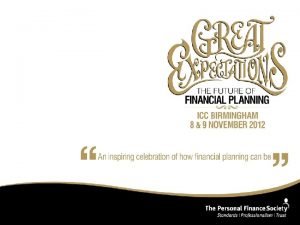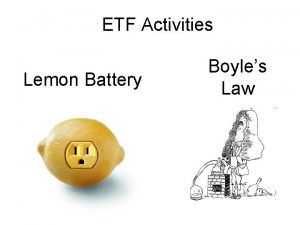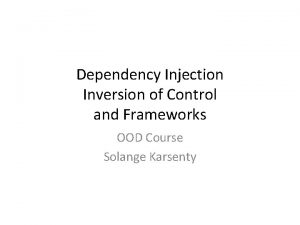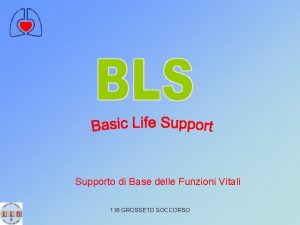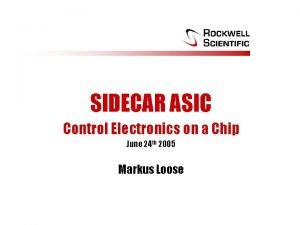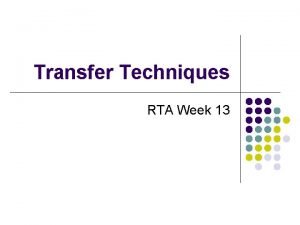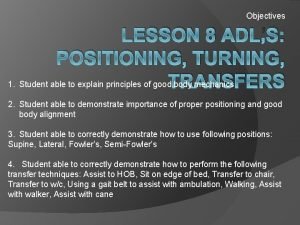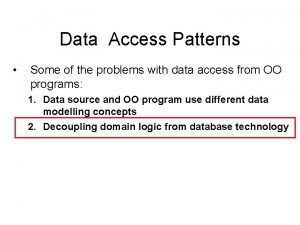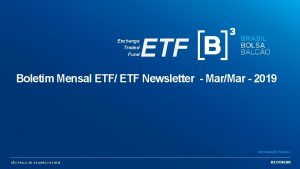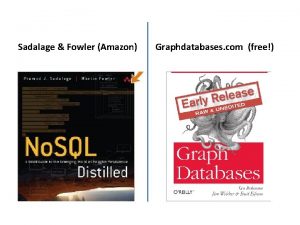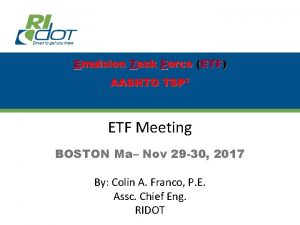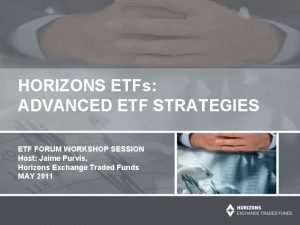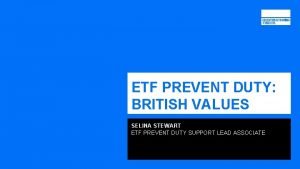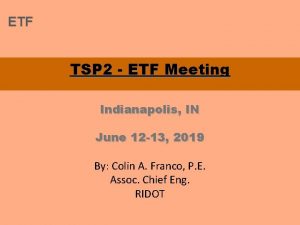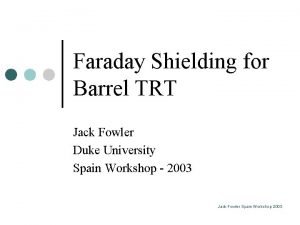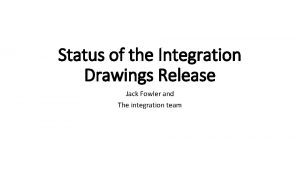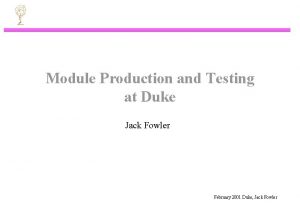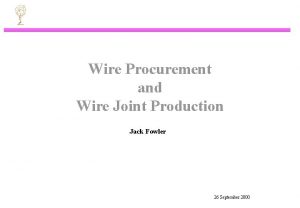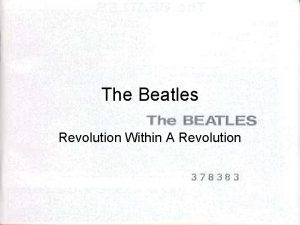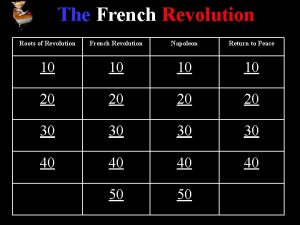ETF Essentials Inside the ETF revolution Jack Fowler













































- Slides: 45


ETF Essentials Inside the ETF revolution Jack Fowler Vice President, i. Shares

Agenda • • Growth and Evolution of the ETP Market Recap: What is an ETF? Advantages of ETFs ETF Structures ETF Trading and Total Cost of Ownership Four Steps to ETP Selection Practical uses of ETFs

Growth and Evolution of the ETP Market

Global ETP multi-year asset growth

European ETP multi-year asset growth

Europe vs. US – ETF Providers ETF managers in Europe by AUM Amundi ETF 3. 00% Source Markets 3. 30% Swiss & Global Asset Management(J ulius Baer) 2. 10% Credit Suisse Asset Management 5. 00% Van Eck Associates Corp 2. 20% Other 8. 50% Pro. Shares 1. 70% Power. Share s/Deutsche Bank 5. 70% UBS Global Asset Management/ UBS AG 4. 10% Zurich Cantonal Bank (ZKB) 4. 90% ETF managers in the US by AUM Other 7. 90% i. Shares 36. 60% i. Shares 40. 00% Vanguard 17. 70% ETF Securities 7. 10% Lyxor Asset Management/ Soc Gen 11. 50% Db xtrackers/db ETC 13. 90% Source: Global ETF Research and Implementation Strategy Team, Black. Rock, Bloomberg. As at Sept 28 2012. State Street Global Advisors 24. 40%

What is an ETF?

What is an ETF? Two great investment ideas brought together Stock Mutual Fund Tradable during the day Diversified ETFs Diversified funds that trade like stocks

ETFs are index funds…. They are listed and traded like a stock on major stock exchanges globally Index Fund Single Stock / Future • Simplicity • Trading flexibility on exchange • Transparency • Intraday pricing • Risk control • Listed options • Cost control • Consistency of returns • Diversification + • Ability to borrow / short • Any transaction size • Variety of trading strategies • Mutual Fund • Open-End Fund Exchange Traded Fund ETFs occupy a unique position in the investment landscape: The intersection between and index fund a listed security

Advantages of ETFs

Why are ETFs so popular? Transparency • Investors know the ETF holdings, price and costs • ETFs offer two sources of liquidity: Liquidity • Traditional liquidity measured by secondary market trading volume • Multi dealer model boosts the liquidity of i. Shares ETFs Diversification Flexibility Cost effectiveness • ETFs provide immediate exposure to a basket or group of securities for instant diversification • Broad range of asset classes including equities, bonds, commodities, investment themes, etc • ETFs are listed on exchanges and can be traded at any time the market is open • Pricing is continuous throughout the day • ETFs offer a cost-effective route to diversified market exposure

Physical Based ETFs Example for Illustrative Purposes : i. Shares FTSE 100 Physical based ETF Portfolio Managers purchase stocks to represent the index Source: i. Shares website as at 17/09/12 and is for illustrative purposes only Exchange Traded Fund

Equity Market Volatility: Days with market move of more than 2% For professional clients / qualified investors only Source: Bloomberg as at 18/09/12

Diversification with ETFs Equities Fixed Income Alternatives Cash & Cash Alternatives Commodities World UK Gilts Property Short Term Treasuries Broad Developed Markets International Government Private Equity Precious Metals Emerging Markets Index-Linked Gilts Global Water Commodity Producers Large, Mid, Smallcap Corporate Growth Value Covered UK Equity

ETF Structures

Structure • Different types of ETPs imply different levels of complexity and carry different structural risks. It is important for investors, especially the retail investor, to be aware of these risks. Exchange Traded Products (ETPs) Exchange Traded Funds (ETFs) • Physically replicating ETFs: – Fully replicating – Optimised/partially replicating • Derivative replicating ETFs Exchanged Traded Notes (ETNs)/Exchanged Traded Commodities (ETCs) Exchange Traded Instruments (ETIs)

Structure Prioritisation Can this product idea comply with UCITS? Compliance with the European Union UCITS Directive is critical to market funds from one EU country in other EU countries and UCITS demonstrates independent oversight and diversification Vehicle Choice Non-UCITS Can we run it as a Physical ETF normal fund? Comments Fund holding physical securities If not physical fund, will swaps be possible? Derivative replicating ETF Fund holding swaps Can this asset be practically stored? Physical Exchange Traded Commodity Note backed by the physical asset Will an institution Exchange guarantee the Traded Note return? Note backed by an institution’s credit

Physical-based ETFs Two types: replicated and optimised ¾ Replicated ¾ For example: ¾ i. Shares FTSE 100 ¾ i. Shares EURO STOXX 50 ¾ i. Shares S&P 500 ¾ Optimised ¾ For example: ¾ i. Shares MSCI World ¾ i. Shares Barclays Capital Euro Aggregate Bond ¾ i. Shares MSCI Emerging Markets Source: Black. Rock. For illustrative purposes only.

Swap-based ETF ¾ Key features: ¾ Ability to construct UCITS compliant ETFs which are impossible to create with the physical structure ¾ Full transparency (collateral, swap counterparties, swap exposure etc) ¾ Good quality, UCITS-compliance collateral with an extra margin ¾ Diversified counterparty exposure ¾ They are still not physical-based ETFs Multiple counterparties and over collateralised swap exposure? Source: Black. Rock. For illustrative purposes only.

Exchange Traded Commodities • i. Shares defines ETCs as debt securities that are backed by fully-allocated physical holdings of precious metals held in secured vaults • Many ETCs are eligible for investment by UCITS but are not themselves units in a collective investment scheme as defined by the UCITS directive For professional clients / qualified investors only • i. Shares ETCs’ assets are held in ring-fenced segregated accounts • ETCs are typically backed by metal held in secured vaults

ETF Trading and Total Cost of Ownership

How traditional mutual funds work Buyers Mutual Fund Stock Exchange Sellers Investors interact with the fund to buy or sell shares 23

ETFs work differently than traditional mutual funds Buyers Stock Exchange “Authorized participants” Sellers Investors buy and sell on an exchange and are insulated from each other’s actions. 24 i. Shares

Basic model for access Through a broker Private Client Adviser ETF On a platform Generally ETFs are traded between brokers on the secondary market.

Trading and Liquidity i. Shares Capital Markets Group can assist clients with accessing each layer of liquidity. Compare volume and “on-screen” bid/offer data to total potential liquidity ETF M ar Depth ket er t Mak Marke ons of ti Indica ty i Liquid • Generate Transaction Cost Analysis (TCA) and provide limit order guidance • Help source liquidity through relationships with 200+ specialist market makers Inc rea sin g L ev e ls of Liq uid ity Secondary Market ADV Primar y Mark et For illustrative purposes only. 26 tion demp e R / n o Creati y it d i sket) Liqu ng Ba i y l r e (Und Identify available liquidity through 50+ APs via the creation/redemption process

Total Cost of Ownership Passive Market Growth = More Passive Providers New Providers = More Competition New Providers More Competition = Lower TERs = More Competition Lower TER = Lower Total Costs

Total Cost of Ownership The true cost of owning an ETF • Total Cost of Ownership: – Is NOT just TER. – Can be broken down into both internal as well as external factors. Internal factors Physical replicating funds Derivative replicating funds External factors • Total Expense Ratio (TER). • Rebalancing costs. • Securities lending revenue. • Total Expense Ratio (TER). • Swap spread. • Trading spreads. + • Creation/redemption. • Brokerage fees. = Total Cost of Ownership • Tax. • Securities lending revenue. • Black. Rock believes Total Cost of Ownership is an accurate measure of investing in an ETF.

Total Cost vs. TER – A Selection of i. Shares ETFs Total Expense Ratio vs. Total Cost of Ownership 80 74 Basis Points (bps) 60 49 40 35 40 40 40 25 24 20 0 0 -20 -18 -40 i. Shares MSCI Turkey i. Shares MSCI Europe ex. UK Source: Black. Rock, Bloomberg. Data as at end of March 2012. i. Shares MSCI Europe TER TCO i. Shares Euro STOXX Select Dividend i. Shares FTSE Eurofirst 80

Four Steps to ETP Selection

Four Steps to ETP Selection 1 Evaluate the ETP Provider 2 Rule in and Rule Out Criteria: Tax, Legal and Compliance 3 Evaluate the Product Structure 4 Select the Product

Introducing i. Shares Due Diligence Framework Four Steps to ETP Selection 1. Evaluate the ETP provider 2. Quick rule in rule out criteria 3. Evaluate the product structure 4. Select the product General Performance: tracking error and tracking difference Trading and valuation Total Cost of Ownership

Practical uses of ETFs

Why do financial professionals use ETFs? Return Risk Costs Seek to outperform other investments Performance vs. active funds Express a view Manage risk Diversification Tradability and flexibility Transparency Spend less, save more Cost effectiveness Tax efficiency

Practical uses of ETFs Core satellite Portfolio construction/ Diversification Interim beta/ Transition management Cash equitisation Delta 1 alternative Risk management Portfolio construction/Diversification Sectors and exotic markets

Implementing Core / Satellite Strategies Core - passively managed vehicles, such as ETFs or traditional index pooled funds lend themselves ideally to the core component of an investment portfolio due to four main reasons: ETFs • Broad diversification by closely mirroring asset class benchmarks • • • Consistent performance relative to a benchmark Low costs Improved risk management Active Strategy 1 Active Strategy 3 Active Strategy 2 Satellites - are typically more specialised investments which serve as active tools to deliver additional returns (alpha). ETF satellites have a number of advantages: • Precise exposure to a wide range of discrete market sectors, specific styles or market capitalisations indices. • Exposure to selected market segments at low costs • Eliminating security selection or manager selection risk Portfolio ETF Satellite

Strategic and tactical Tactical Model Portfolio rm te rt- Strategic Model Portfolio ho s d Ad ws vie Thematic Model Portfolio Exp vie ress the ws m atic For illustration purposes only.

i. Shares Advantage

Who is Black. Rock? Black. Rock is a truly global firm that combines the benefits of worldwide reach with local service and relationships. We manage assets for clients in North and South America, Europe, Asia, Australia, the Middle East and Africa. The firm employs more than 10, 100 talented professionals and maintains offices in 27 countries around the world. As of Q 3 Earnings Report, Black. Rock's assets under management total US$3. 673 trillion across equity, fixed income, cash management, alternative investment, real estate and advisory strategies. Black. Rock’s capabilities are built around our clients’ greatest needs: Client focus • We partner with clients and their advisers to build portfolios that reflect their objectives, risk tolerance and time horizons Broader capabilities for better outcomes • We provide an industry-leading breadth of investment solutions across active management, quantitative, and index strategies, including our i. Shares® ETFs • A dedicated group—BMACS—creates customized, multi-asset solutions to address specialized needs Global insights to uncover opportunities • Some 100 investment teams in 27 countries share their best thinking to gain the insights that can change outcomes Culture of risk management • Black. Rock’s risk management team works with portfolio managers while remaining truly independent, so their recommendations are unbiased and portfolio managers can make more informed decisions Source: $3. 67 trillion in assets as of 30 September 2012 includes commodity and currency mandates Expertise across asset classes

Black. Rock historical perspective 2008: Launched Financial Markets Advisory Business Assets under management ($ billions) 2008: Launched Financial Markets Advisory Business 2007: Quellos Group, LLC acquisition 1999: IPO (NYSE: BLK) Broad employee ownership 1995: Merged with PNC, offered common vision & fund platform 2006: Merger of Black. Rock and MLIM 1988: Founded Blackstone Financial Management 1992: Changed name to Black. Rock 1998: Integrated equity, fixed income, liquidity, and mutual funds under Black. Rock name 2005: State Street Research and Management 2000: Launched acquisition Black. Rock Solutions® 2009: Merger of Black. Rock and BGI; Hired Professionals from R 3 Capital Partners`

What sets i. Shares ETFs apart? Largest ETF provider in the world Our Experience 607 ETFs listed globally $711. 8 billion in assets 1 + Return Risk Total Performance philosophy Our Focus Holdings published daily Award-winning website Costs + Part of Black. Rock, the world’s largest asset manager Our Scale Over 40 years of indexing experience Deep roots in every world region Source: ETP Landscape Industry Highlights Montly Report September 2012

Due Diligence Resources and Tools Ø i. Shares ETP Due Diligence Guide Ø Ø Ø Ø Key questions Structure Tax Performance Trading Total Cost of Ownership Securities Lending i. Shares Four Steps to ETP Selection

Q&A

Disclaimers Regulatory Information Black. Rock Advisors (UK) Limited, which is authorised and regulated by the Financial Services Authority ('FSA'), registered office at 12 Throgmorton Avenue, London, EC 2 N 2 DL, England, Tel +44 (0)20 7743 3000. i. Shares plc, i. Shares III plc, i. Shares IV plc, i. Shares V plc and i. Shares VI plc (together 'the Companies') are open-ended investment companies with variable capital having segregated liability between their funds organised under the laws of Ireland authorised by the Financial Regulator. Restricted Investors This document is not, and under no circumstances is to be construed as an advertisement or any other step in furtherance of a public offering of shares in the United States or Canada. This document is not aimed at persons who are resident in the United States, Canada or any province or territory thereof, where the companies/securities are not authorised or registered for distribution and where no prospectus has been filed with any securities commission or regulatory authority. The companies/securities may not be acquired or owned by, or acquired with the assets of, an ERISA Plan. Risk Warnings Investment in the products mentioned in this document may not be suitable for all investors. Past performance is not a guide to future performance and should not be the sole factor of consideration when selecting a product. The price of the investments may go up or down and the investor may not get back the amount invested. Your income is not fixed and may fluctuate. The value of investments involving exposure to foreign currencies can be affected by exchange rate movements. We remind you that the levels and bases of, and reliefs from, taxation can change. Black. Rock has not considered the suitability of this investment against your individual needs and risk tolerance. The data displayed provides summary information, investment should be made on the basis of the relevant Prospectus which is available from your Broker, Financial Adviser or Black. Rock Advisors (UK) Limited. We recommend you seek independent professional advice prior to investing. In respect of the products mentioned this document is intended for information purposes only and does not constitute investment advice or an offer to sell or a solicitation of an offer to buy the securities described within. This document may not be distributed without authorisation from Black. Rock Advisors (UK) Limited. The Dublin domiciled funds which include the term ‘swap’ in their names are swap based funds. These funds enter into fully funded swap agreements with counterparties to obtain the performance of the funds’ respective benchmarks. Swap transactions are subject to the risk that counterparties may default on their obligations. If this were to occur, the relevant fund may sustain a loss. The funds intend to mitigate much of their credit risk exposure to each counterparty by obtaining collateral from the counterparty which will be held by a third party collateral agent. In the event of a default by a counterparty or collateral agent, the swap funds may still have some counterparty risk exposure to the defaulting counterparty or collateral agent respectively. In some circumstances, counterparties can terminate the swap agreements early which may impact the returns of the funds. In addition, the counterparties may seek to pass on any additional costs relating to the hedging of their risk exposure under the swaps to the relevant fund. In the event that a swap fund is unable to enter into suitable swap arrangements or maintain swap arrangements on acceptable terms, the fund may not be able to achieve its investment objective and policy unless it is able to track its benchmark by other means.

 Jack fowler musician
Jack fowler musician Etf trading essentials
Etf trading essentials Etf essentials
Etf essentials Main characters of jack and the beanstalk
Main characters of jack and the beanstalk Jack and jill french revolution
Jack and jill french revolution You should hope that this game will be over soon
You should hope that this game will be over soon Third agricultural revolution definition
Third agricultural revolution definition Russian revolution vs french revolution
Russian revolution vs french revolution Martin fowler inversion of control
Martin fowler inversion of control Direct ground lift
Direct ground lift Linea intermamilar
Linea intermamilar Fowler
Fowler Legal draftsman meaning
Legal draftsman meaning Michael fowler physics
Michael fowler physics Counter finger
Counter finger Fowler v. board of education of lincoln county
Fowler v. board of education of lincoln county When is trendelenburg position used
When is trendelenburg position used Semi fowler's position
Semi fowler's position Yarı oturur pozisyonu nedir
Yarı oturur pozisyonu nedir Semi fowler's position
Semi fowler's position Michael fowler physics
Michael fowler physics Unoccupied bed procedure
Unoccupied bed procedure The bi bang
The bi bang Fowlerio padėtis
Fowlerio padėtis Posición roser
Posición roser Fowler's position angle
Fowler's position angle Scanner toracique
Scanner toracique Kelly fowler merced college
Kelly fowler merced college Posizione proclive
Posizione proclive Semi fowler position
Semi fowler position Fowler stages of faith
Fowler stages of faith Posição fowler modificada
Posição fowler modificada Monigote de fowler
Monigote de fowler Fowler's position degrees
Fowler's position degrees How many degrees is semi fowler's position
How many degrees is semi fowler's position Gwsb career center
Gwsb career center Flexible software design
Flexible software design Types of fowler's position
Types of fowler's position Michael fowler physics
Michael fowler physics Dr james fowler
Dr james fowler Mitch fowler
Mitch fowler Physical exam equipment
Physical exam equipment Michael fowler physics
Michael fowler physics Data access patterns java
Data access patterns java Prone position
Prone position Etapas de fowler
Etapas de fowler

